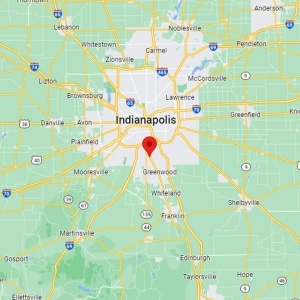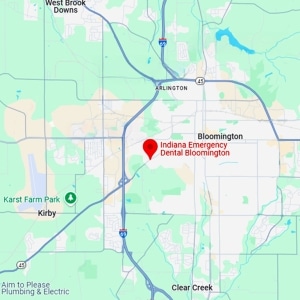3D Panoramic Wisdom Teeth in Indianapolis & Bloomington, IN

Panoramic 3D X-rays are a new leap in the familiar technology. Since its inception in the 1800s, X-rays have received a lot of attention over the years, and with each new iteration, the imaging quality has become more and more useful to providers of every variety. Dentists will use these intricate pictures to reduce guesswork and needless investigatory processes of your wisdom teeth.
What Are Panoramic 3D X-rays?
As the name implies, panoramic 3D X-rays in Indianapolis, IN add another dimension to the images of the wisdom teeth. The extra details of the jaw and surrounding structures help the dentist and staff understand the underlying conditions that may be affecting the patient’s oral health. It not only makes it possible for dental procedures to be mapped out accordingly, but it can potentially catch burgeoning problems before they have the chance to develop. The procedure also exposes you to less radiation, though it should be noted that even traditional X-rays expose you to very small amounts of radiation compared to other everyday sources.
How Are 3D X-Rays Used for Wisdom Teeth?
3D X-rays provide much of the same information as 2D X-rays, so you’ll see them used for similar procedures. The difference is the level of detail in each image:
- Positioning: If a wisdom tooth is impacted (either fully or partially), the dentist will need to see where it is. For instance, if the tooth is still submerged under the jawbone, it will mean a different treatment than if it’s broken through the jaw bone without having broken through the gum line.
- Spacing: Some jaws simply can’t accommodate a wisdom tooth. The panoramic details will show the dentist what kind of space they’re working with so they can determine how to proceed.
- Approach: For anything from cavities to gum disease to bone blockage, a surgeon needs to have all the details in hand before they can move forward. 3D X-rays can help them catch things they may not have been able to discern clearly on a set of 2D images. The more prepared they are, the faster and more efficient the surgery will be.
There are three major types of extraction for wisdom teeth. The most common is a simple extraction, in which the whole tooth can be removed through an incision. For an impacted tooth, the dentist may need to break the tooth into pieces before it’s extracted. If the patient requires surgery, it’s because the wisdom tooth is extremely impacted, and it may require the loss of bone or tissue in order to safely extract the tooth.
It can be difficult for patients to understand the benefits of 3D images vs. standard X-rays, especially when it’s hard to coordinate a side-by-side comparison between the two scenarios. Suffice it to say that these images have been known to speed up procedure times, cut back on recovery times, and generally improve the overall experience of patients who require extensive wisdom teeth treatments. Even dentists who haven’t bought the technology would acknowledge the superiority of these images.
Emergency Dentists in Indianapolis, IN
New technologies in different industries are often adopted in the same way that new technology is adopted in people’s personal lives. Some professionals will flock to the latest gadgets on the market, while others will largely stick with the same techniques and tools that they were introduced to during college and their initial training.
At Indiana Emergency Dental, our job is to find the technology that will add as much possible value to our patients’ experience. Because panoramic X-rays are known to give our dentists more confidence when it comes to wisdom teeth removal, we’ve made sure to invest in equipment that will go the distance.







